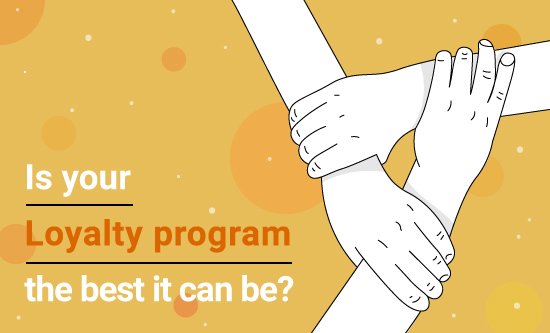In the old days, Customers weighed up how much plastic they should have in their wallets. There were special ‘wallets’ for loyalty cards as people did not want to miss out on discounted offers. With digital wallets, this constraint is just not there. But with ease of joining or abandoning loyalty arrangements, came a constant struggle to maintain the relationship with the Customer.
Loyalty schemes: Three key considerations
It may be that Customers are not more or less loyal; they have a lot more choice and there are few barriers in joining loyalty schemes. So how can you differentiate your scheme? We think with data and analytics and constant experimentation. It is a cliche but still seems to be a vision rather than a plan for many organisations.
The following three steps must be woven into your scheme; not just the transaction at the check-out and not just for one programme participant but the entire ecosystem.
![]() Step 1: Your digital data
Step 1: Your digital data
First of all, you will have to assess what to do with the ton of information that digital consumer behaviours generate because, well, that is what happens every minute. Does any of this matter to how the programme is designed or how it awards points? Most programmes equate Engagement with the next transaction. Sure, you can award points for any transaction and even create value tiers. But what if there is a low-value transaction that paves the way for 10x value down the line? How can you test that?
![]() Step 2: The programme’s participants
Step 2: The programme’s participants
How can you increase value for the entire ecosystem? In a way, this seems like a greater ‘pie’ rather than a ‘share of wallet’ from a marketing perspective. Has the programme changed consumer behaviour for anyone in the ecosystem and are the incentives aligned with that behaviour? Standard behaviour from one perspective may lead to a decent upside for another brand in the ecosystem.
![]() Step 3: Flexibility
Step 3: Flexibility
Finally, you have to plan and be prepared for several re-launches. It is well documented that Customers change their behaviors all the time, try new things because it is easy to do, are fickle.
- The scheme’s Features and Benefits have to be refreshed as soon as you become aware of major behaviour shifts. Most programmes do not have this flexibility built-in and re-launches become costly exercises.
- The programme’s economics have to be assessing cost versus value regularly. Often the understanding of how much additional value to give away is not robust and programmes start losing money earlier than imagined.
- Data and analytics associated with loyalty programmes must be a lot more forward-looking. Focusing on historical performance is necessary for assessing effectiveness but re-launches require evaluation of fresh assumptions.
Paraphrasing the McKinsey research below: ‘Earn-and-Burn’ cannot remain the only focus of your loyalty programme forever.
